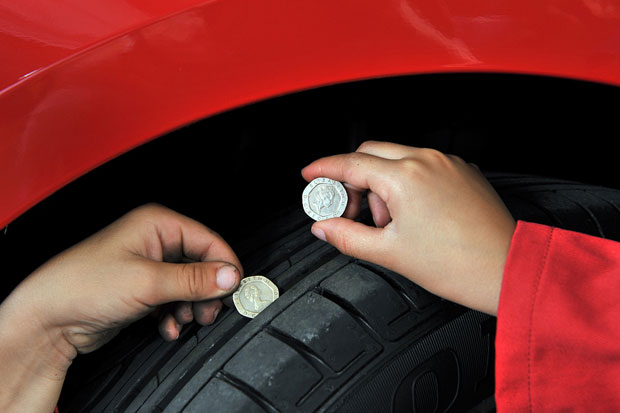20 October 2016
Drivers urged to take care of tyres as safety month kicks-off
As tyres are the only part of a vehicle that makes contact with the road, it is essential that they are in tip-top condition.

However, many drivers continue to fail to undertake both regular and routine checks.
Although new government figures reveal a reduction in casualties resulting from tyre-related incidents on Britain’s roads, October continues to be Tyre Safety Month.
Tyre Safety Month 2016 started this week in the wake of positive figures from the Department for Transport’s Reported Road Casualties Great Britain, which highlighted a 28% decrease in the number of people killed or seriously injured in tyre-related incidents, with total casualties falling by 16.2% – compared to 2014 figures.
That equates to a 44% decrease in all casualties caused by tyre-related incidents since Tyre Safety Month’s organiser, TyreSafe was established in 2006.
While the news has been well-received, TyreSafe continues to urge drivers not to be complacent and ensure they carry out regular tyre checks.
Despite the casualty rates falling, TyreSafe stress that there is no evidence that the number of tyre-related incidents which do not result in fatalities or injury is decreasing, as that data is not captured in the Department’s report.
As revealed earlier this year by TyreSafe’s survey of tyres at the point of replacement (in partnership with Highways England) there is evidence that the number of illegal tyres on Britain’s roads this year will remain at 10 million – or even increase.
Current UK law requires car tyres to have a minimum of 1.6mm of tread across the central three quarters of the tyre, around its entire circumference. Drivers found to be in breach of these regulations face a fine of up to £2,500 and three penalty points for each illegal tyre.
TyreSafe chairman Stuart Jackson said: ‘Tyre Safety Month 2016 kicks off with good news, but motorists should not interpret those results as being an excuse not to carry out regular tyre checks.
‘Tyres are a safety-critical component on any vehicle and the only one in contact with the road, and while modern vehicles give occupants a far greater chance of surviving a collision – even walking away uninjured – well-maintained tyres will significantly reduce the risk of being involved in an incident in the first place.’
That’s why Tyre Safety Month’s message this year is ‘Don’t chance it – check it’. The campaign takes place every October to coincide with the onset of the worst of the British weather and is designed to act as a focus for the UK’s tyre safety awareness charity’s year-round activities.
In addition to checking tyre tread depth, drivers should also check:
- That vehicle tyre pressures are in accordance with the manufacturer’s recommended settings. Driving with the correct pressures is crucial to the way the vehicle will perform, yet TyreSafe says that the government estimates 12.5% of tyres on the road are dangerously underinflated, while a survey by Wheelwright and Highways England found it was as high as 25%.
- Tyre condition, such as lumps, bumps, cracking and scuffs, which increase the chances of a catastrophic tyre failure – when driving at motorway speed, in particular.
TyreSafe’s supporters have planned a diverse range of activities during the month and will offer free tyre checks as well as handing out campaign materials.
TyreSafe urges company car and van drivers to take the 20p test to stay safe and legal. That means inserting a 20p coin into the main tread grooves of their vehicle’s tyres.
If the outer rim of the coin is covered by the tread, this indicates sufficient tread depth to be safe and legal. If the outer rim of the coin is visible, drivers should have their tyres inspected by a qualified professional.
How to take the 20p test
- Tyre tread depth should be checked at least once a month at the same time that tyre pressures are checked.
- A 20p coin provides a useful alternative to a calibrated tread depth gauge.
- Insert the 20p coin into the main tyre grooves at several places around the circumference of the tyre and across its width.
- If the outer band of the 20p coin is visible whenever you insert it into the grooves, your tread depth may be illegal and you should have them checked by a qualified tyre specialist.
- When checking your tread depth, give the rest of the tyres a visual inspection for any cuts or bulges and remove any stones or objects embedded in the tread.
- If in doubt, visit your local garage or tyre dealer.
- Further information is available at www.tyresafe.org and a special guide is accessible here.


